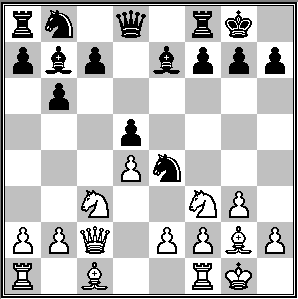
1. d4 e6 2. c4 Nf6 3. Nf3 b6 4. g3 Bb7 5. Bg2 Be7 6. Nc3 O-O 7. Qc2 d5 8. cxd5 exd5 9. O-O Ne4

10. Ne5 Nxc3
Supporting the knight by 10...f5 seems more logical. Though that move would be weakening, it's not clear how White could exploit it. 11. Bxe4 fxe4 (11...dxe4 12. Qb3+ Kh8 13. Nf7+ wins the exchange) 12. Qb3 leads nowhere after 12...Kh8, since after 13. Nxe4 dxe4 14. Nf7+ Rxf7 15. Qxf7, Black's two pieces outweigh White's rook and pawn.
If after 10...f5, White instead tries 11. f3, then Black can counter strongly with 11...Nxc3 and 12...c5.
11. bxc3 Nd7 12. Nxd7 Qxd7
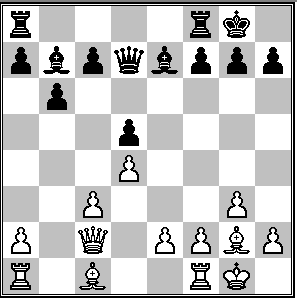
13. c4 Rac8
13...c6 would prevent White from establishing a dominant pawn center. Then on 14. cxd5 cxd5, Black threatens ...Ba6 followed by ...Bc4, when the pawn island at d5 would be firmly held. Then after 15. Qd3 (to prevent ...Ba6), 15...Rac8 with ...Rc4 is a real nuisance.
14. e4 (after 13...c6) would prevent 14...Ba6 due to 15. exd5 cxd5 16. Bxd5, but 14...Rac8 would renew the threat of ...Ba6, due to the pin on the c-pawn which permits ...Qxd5 at the end.
In retrospect, 10. Ne5 was probably premature, as the exchange on d7 sped up Black's development. 10. Rd1 was more in the spirit of the position, preparing to pressure the Black d-pawn after an eventual ...c5.
14. cxd5 Bxd5 15. e4 Bb7 16. Bb2 c5 17. d5 Rfd8 18. Rad1 c4
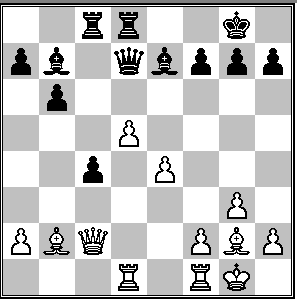
19. Qc3 Bf8
19...f6, though weakening, avoids the unfavorable tactics which follow. 19...Bf6 just loses time after 20. e5.
20. e5 Qb5 21. e6
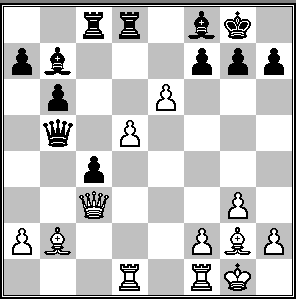
21...f6
21...Bxd5? loses instantly to 22. e7, since the dark square bishop cannot abandon control of the g7 square.
21...fxe6 22. fxe6 Rxd1 (22...Bxg2 23. Rxd8 Rxd8 24. e7! followed by exf8(Q)+ and Kxg2 wins a piece) 23. Rxd1 Bxg2 24. e7! gives White the twin threats of exf8(Q)+/Kxg2 and Rd8.
22. e7 Bxe7 23. d6
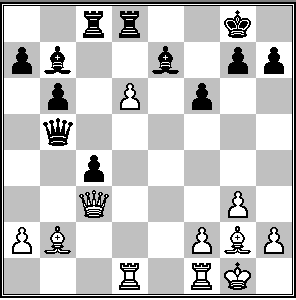
23...Bxd6
23...Bxg2 again loses to 24. dxe7.
24. Bxb7 Be5
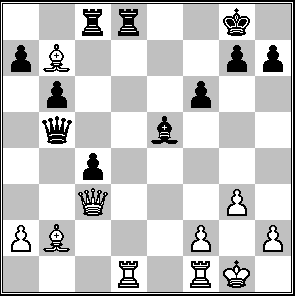
25. Bxc8! Rxc8
25...Bxc3 26. Rxd8+ and 27. Bxc3 gives White a healthy four pieces for the queen. 25...Rxd1 would have been met by 26. Be6+ Kf8 (26...Kh8 27. Rxd1 saves the queen through the threat of 28. Rd8+) 27. Ba3+ Ke8 28. Qxc4 consolidating White's material advantage.
26. Qe3! Qxb2
The bishop is frozen because of the fork at e6.
27. f4 Qc3

28. Qe4!
Now there is no saving the bishop.
1-0